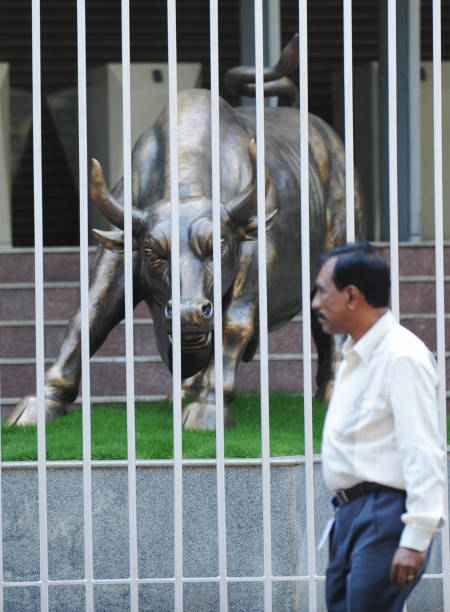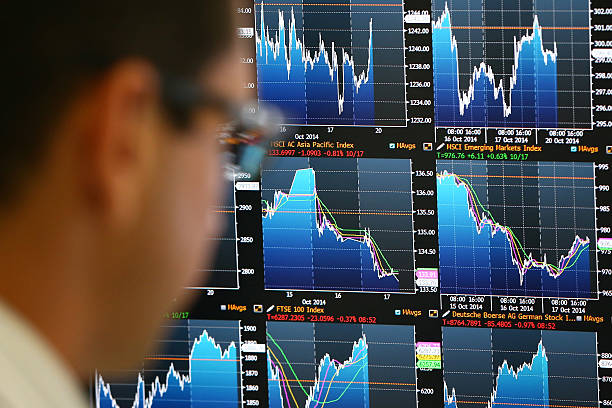Indian equity benchmark indices, BSE Sensex and Nifty50, soared to unprecedented heights, driven primarily by robust performance in the banking sector on Tuesday. The BSE Sensex surged over 700 points, crossing the 78,000 level for the first time, and ended the day at a lifetime closing high of 78,053.52, up 712 points or 0.92 per cent. Similarly, Nifty50 reached a new pinnacle, closing at 23,721.30, up 183 points or 0.78 per cent.
This rally was led by significant contributions from major banking stocks, with HDFC Bank emerging as the primary driver, supported by ICICI Bank and Axis Bank. The banking sector’s strong showing was reflected in the Nifty Bank index, which also achieved a lifetime high of 52,669, gaining 2 per cent or 965 points during intraday trading.

Table of Contents
Top Sensex Gainers
The top Sensex gainers included notable names such as Axis Bank, ICICI Bank, HDFC Bank, Tech Mahindra, Larsen & Toubro (L&T), State Bank of India (SBI), Bajaj Finserv, Infosys, and Reliance Industries Limited (RIL). These companies demonstrated significant upward momentum, contributing to the overall market rally with impressive performance and strong investor confidence. On the other hand, the top Sensex losers comprised Power Grid, Asian Paints, Tata Steel, JSW Steel, Nestle India, Maruti Suzuki, and NTPC.
These firms experienced a downturn, reflecting various market challenges and sector-specific issues that led to a decline in their stock prices. The mixed performance of these stocks underscores the dynamic nature of the market, with diverse factors influencing the trajectories of different sectors and companies. The contrasting fortunes of the gainers and losers provide a comprehensive snapshot of current market trends and investor sentiment
The stellar performance of banking stocks underscores the sector’s crucial role in the market’s rally. HDFC Bank, in particular, played a pivotal role, propelling the index forward with robust gains. The optimism surrounding the banking sector can be attributed to strong quarterly earnings, healthy asset quality, positive economic indicators, and increasing investor confidence. Additionally, regulatory reforms and technological advancements within the banking industry have contributed to its impressive growth trajectory. The combination of these factors has solidified the sector’s position as a key driver of market momentum, highlighting its importance in the broader economic landscape.
Market Outlook
Despite the current bullish sentiment, analysts caution that the market may experience volatility in the coming days due to the monthly Futures and Options (F&O) expiry. Siddhartha Khemka, Head of Retail Research at Motilal Oswal, pointed out that markets this week will be influenced by global macroeconomic data and the progress of the monsoon season in India. He stated that in light of the monthly derivatives expiry, they anticipate Nifty to consolidate at this point in time with some volatility.
V K Vijayakumar, Chief Investment Strategist at Geojit Financial Services, echoed a positive outlook, highlighting the sharp 7.5 per cent rebound in Nifty from its June 4 lows as an indication of a bullish market undercurrent. He said that although high valuations could lead Domestic Institutional Investors (DIIs) to book profits and foreign institutional investors (FIIs) to sell, enthusiastic civilian investors are probably going to purchase every dip because the “buy-on-dip strategy” has shown to be extremely successful in this bull market.
A key economic development that could significantly bolster market sentiment is the anticipated current account surplus in the fourth quarter of the fiscal year 2024 (Q4FY24). Vijayakumar emphasized that a current account surplus would be highly favourable for the market, potentially easing pressure on the rupee, which has faced volatility in recent times. This development is expected to attract substantial Foreign Institutional Investor (FII) inflows, enhancing liquidity and market stability. Furthermore, such a surplus would signal robust economic health, reinforcing investor confidence.
The positive impact of this surplus could be magnified once there is clarity on the Federal Reserve’s decisions regarding potential rate cuts, which could further influence global investment patterns and capital flows into emerging markets like India. This alignment of domestic economic strength and favorable international monetary policies could create an optimal environment for sustained market growth and prosperity



